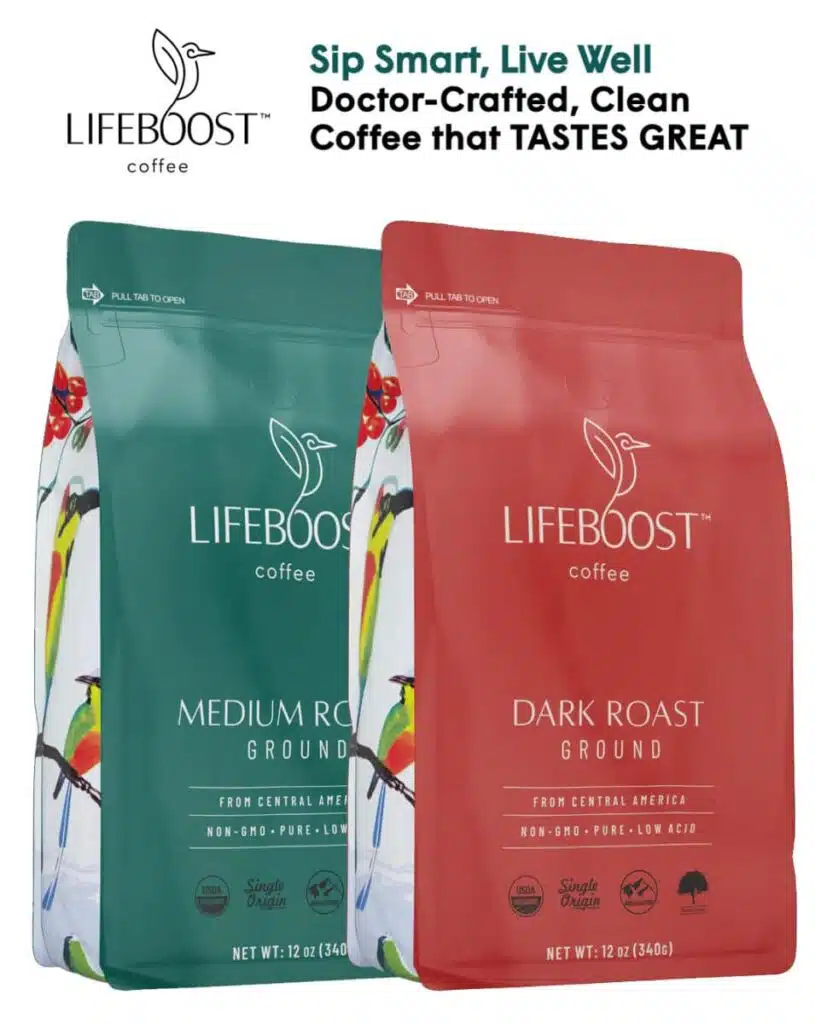Filter coffee offers a rich and flavorful experience, making it a favorite for many coffee enthusiasts. One essential element in this brewing method is the use of paper filters. These filters not only help to trap coffee grounds but also enhance the clarity of your brew. By understanding the various benefits and types of paper filters available, you can elevate your coffee-making process. As you delve deeper into the world of filter coffee, it becomes evident that the right paper filters play a crucial role in achieving that perfect cup.
Introduction to Filter Coffee
Filter coffee is a beloved beverage enjoyed by millions around the world. This brewing method involves pouring hot water over ground coffee, allowing a rich, aromatic infusion to develop as water extracts the essential flavors and oils. The result is a smooth, clean cup that highlights the unique characteristics of the coffee beans.
Key Characteristics of Filter Coffee:
- Flavor Profile: Filter coffee retains a vibrant taste, with clarity and brightness that can vary depending on the coffee variety and preparation method.
- Brewing Time: The brewing process typically takes around 4 to 5 minutes, providing a balanced flavor extraction.
- Consistency: Filter coffee allows for greater consistency in taste, making it easier to replicate your favorite cup each time.
To achieve the best results, many coffee enthusiasts prefer using paper filters during the brewing process. These filters serve a crucial role in ensuring that only the liquid coffee passes through, leaving behind unwanted grounds and sediment. The use of paper filters offers several benefits, such as reducing bitterness and promoting a clean finish.
In conclusion, filter coffee stands out for its remarkable flavor clarity and brewing simplicity. When paired with effective tools like paper filters, coffee lovers can enhance their brewing experience and savor every sip of their favorite caffeinated delight.
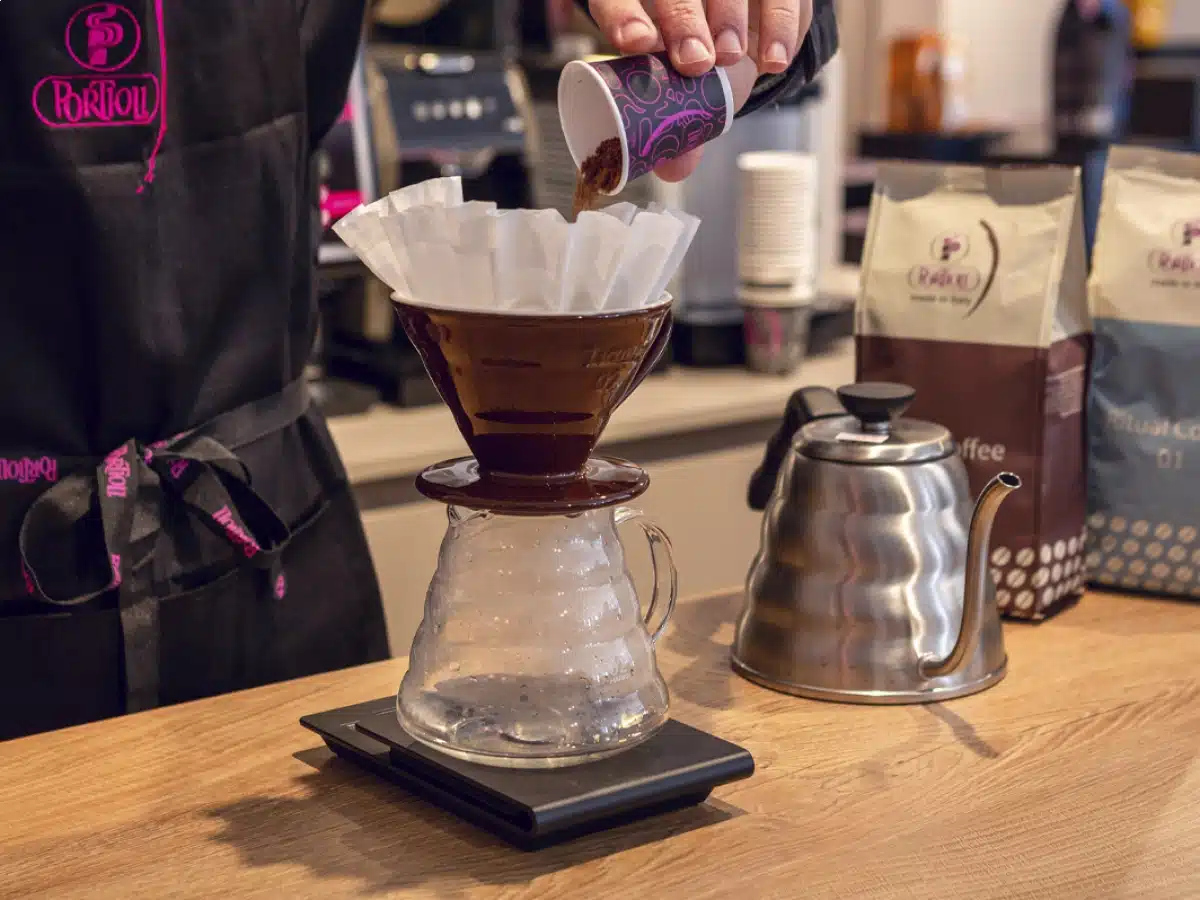
What Are Paper Filters?
Paper filters are essential tools in the coffee brewing process, specifically designed to separate the coffee grounds from the brewed liquid. Typically made from cellulose or a blend of wood pulp, these filters are an eco-friendly option that enhances the quality of your coffee. Here’s a closer look at their features and significance:
- Material Composition: Most paper filters are crafted from unbleached or bleached paper. Unbleached options maintain a natural flavor profile, while bleached filters provide a cleaner appearance.
- Design Variations: They come in various shapes and sizes, including cone and flat-bottomed designs, catering to different brewing methods such as drip coffee makers, pour-over systems, and French presses.
- Porosity: The porosity of paper filters plays a crucial role in determining the flow rate of water through the coffee grounds, which affects extraction. A well-designed filter allows flavors to be extracted efficiently while retaining the grounds.
Using paper filters offers several advantages, such as minimizing sediment in your cup and ensuring a smooth texture. However, the choice between different paper filter types and styles can influence the final flavor of your coffee. By understanding what paper filters are and how they work, you can make an informed decision in your coffee brewing journey.
Benefits of Using Paper Filters
Using paper filters for brewing filter coffee has gained popularity among coffee enthusiasts for several compelling reasons. Here are some key benefits of incorporating paper filters into your coffee preparation:
- Enhanced Clarity: Paper filters trap fine coffee grounds and oils, resulting in a clean, crisp cup of coffee with a more refined flavor profile.
- Reduced Bitterness: By filtering out oils, paper filters help minimize bitterness, allowing the natural sweetness and nuanced flavors of the coffee beans to shine through.
- Convenience: Disposable paper filters simplify the cleanup process. After brewing, you can easily discard the used filter along with the grounds, saving you time and effort.
- Affordability: Generally, paper filters are budget-friendly, making them an accessible option for both casual drinkers and avid coffee lovers alike.
- Versatility: Available in various sizes and shapes, paper filters fit numerous brewing devices, from pour-over to drip coffee makers, allowing for flexibility in your brewing method.
- Environmentally Considerate Options: Many brands offer biodegradable or compostable paper filters, providing an eco-friendly choice for environmentally conscious consumers.
In summary, the use of paper filters not only elevates the quality of your coffee experience but also adds convenience and affordability to your brewing routine. With these benefits, it’s no wonder that many coffee aficionados opt for paper filters!
Types of Paper Filters
Choosing the right paper filters can significantly impact your filter coffee experience. Various types are available, each designed to cater to different brewing methods and preferences. Here’s a breakdown of the most common types of paper filters:
- Cone-Shaped Filters:
- Designed for pour-over and drip coffee makers.
- Efficiently capture coffee grounds, allowing for an even extraction.
- Basket Filters:
- Perfect for traditional drip coffee machines.
- Available in flat-bottomed and round shapes, they hold a larger quantity of grounds.
- Natural vs. Bleached Filters:
- Natural filters retain the natural color of paper and often impart a slight paper taste, which some coffee enthusiasts appreciate.
- Bleached filters are bright white and tend to produce a cleaner taste as any residual flavors from the paper are minimized.
- Reinforced Filters:
- Extra thick and sturdy; great for brewing strong coffees without the risk of tearing.
- Unbleached Filters:
- Made from unbleached pulp, these filters are considered more eco-friendly and retain some of the coffee’s natural oils, enhancing flavor.
When selecting paper filters, consider your brewing method and personal taste preference. Each type offers unique advantages, ensuring you can find one that perfectly complements your coffee routine.
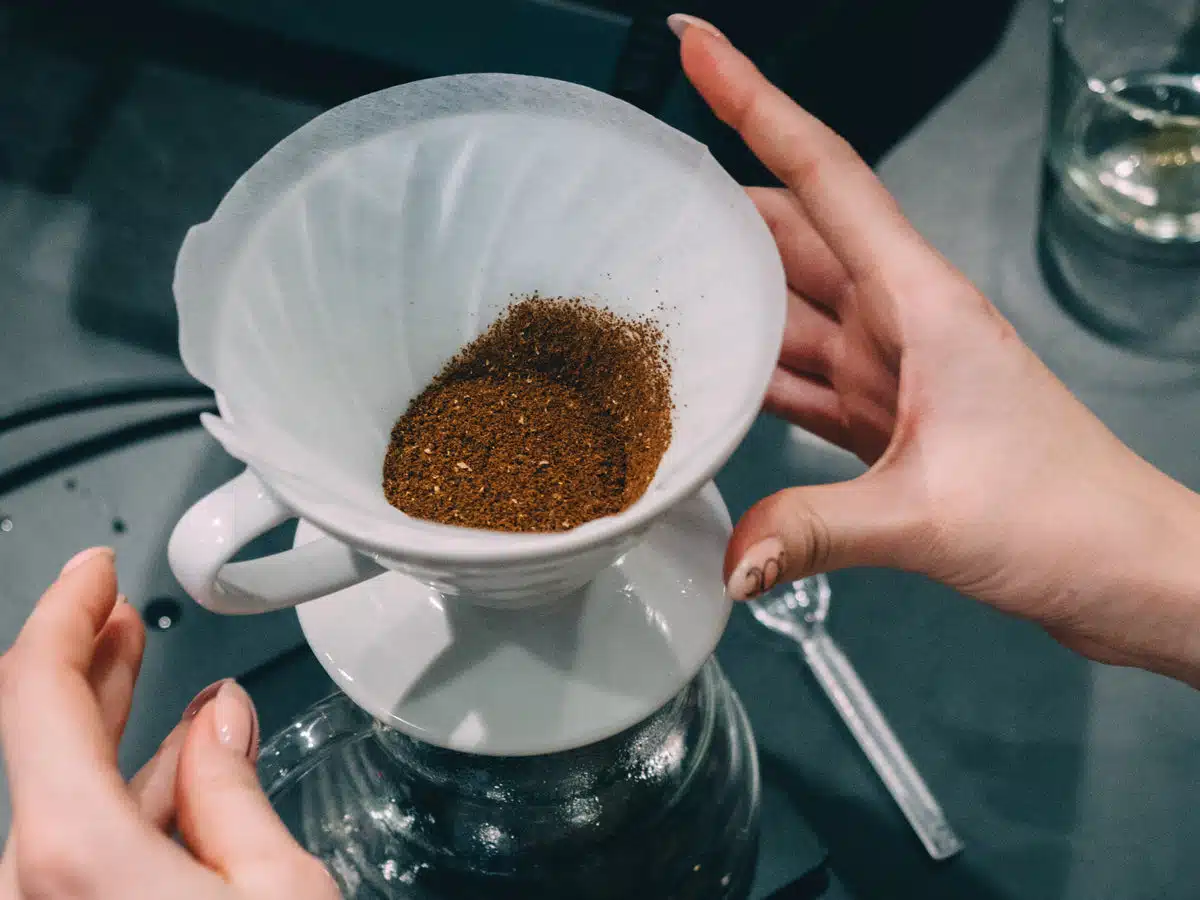
How to Choose the Right Paper Filter
Selecting the right paper filters can significantly enhance your coffee brewing experience. Here are essential factors to consider when making your choice:
1. Filter Size
- Ensure the paper filters fit your coffee maker. Common sizes include:
- #1 (small): Ideal for single-serve brewers.
- #2 (medium): Suitable for standard drip coffee machines.
- #4 (large): Best for larger brewers or pour-over methods.
2. Material
- Bleached vs. Unbleached:
- Bleached filters are white with a mild taste, while unbleached filters retain a brown color and offer a more natural flavor profile.
- Thickness: Thicker filters can prevent sediment but may absorb some oils, altering taste.
3. Compatibility
- Check if the paper filters are designed for your coffee maker brand. Some brands have proprietary filters that optimize brewing.
4. Pore Size
- Consider the pore size which affects extraction:
- Fine pores might restrict flow but enhance flavor.
- Coarser filters allow faster brewing but might lead to grit.
5. Sustainability
- Look for environmentally friendly options. Some manufacturers offer compostable paper filters, which reduce waste.
By evaluating these factors, you can confidently choose the right paper filters that enhance your coffee’s taste and brewing efficiency.
The Brewing Process with Paper Filters
Brewing filter coffee with paper filters is an art that combines precision and technique. Using paper filters enhances the experience by ensuring a clean and flavorful cup. Here’s a step-by-step guide to make the most of your brewing process.
- Choose Your Coffee Ratio: Start with the right coffee-to-water ratio. A standard guideline is to use 1 to 2 tablespoons of coffee grounds per 6 ounces of water.
- Prepare the Filter: Place the paper filter in your coffee maker or dripper. Rinse it with hot water to eliminate any paper taste and preheat the brewing vessel. Discard the rinsing water.
- Add Coffee Grounds: Place the freshly ground coffee into the filter. Ensure an even distribution to promote uniform extraction.
- Water Temperature: Heat your water to about 195°F to 205°F (90°C to 96°C). This temperature range extracts flavors optimally without scorching the grounds.
- Pour Water: Begin with a small amount of water to saturate the grounds, allowing them to bloom for about 30 seconds. Then, slowly pour the remaining water in a circular motion.
- Brewing Time: Aim for a total brewing time of 3 to 4 minutes, adjusting based on flavor preference.
Using paper filters not only simplifies cleanup but also retains oils and sediment, resulting in a bright, clean cup of filter coffee. Enjoy experimenting with different coffee blends and grind sizes for a richer taste!
Common Mistakes to Avoid
When brewing filter coffee with paper filters, many enthusiasts make common mistakes that can adversely affect the taste and quality of their brew. To ensure you achieve the perfect cup, keep the following points in mind:
- Skipping Rinsing: Always rinse your paper filters before use. This process removes any residual paper taste and ensures a cleaner flavor profile. Simply run hot water through the filter before adding coffee grounds.
- Incorrect Coffee Grind Size: Using the wrong grind size can lead to over-extraction or under-extraction. Aim for a medium grind that works well with paper filters, providing balanced flavor extraction.
- Not Measuring Coffee: Avoid the “eyeball” method. Instead, measure your coffee-to-water ratio. A common guideline is 1 to 2 tablespoons of coffee per 6 ounces of water. This ratio can vary based on personal taste.
- Poor Water Quality: Using tap water with odd flavors can easily compromise your coffee. Opt for filtered water to enhance the overall taste when using paper filters.
- Ignoring Brew Time: Brew time matters! A soaking time of 4 to 5 minutes usually yields the best results. Longer times might result in bitterness, while shorter can lead to sour notes.
By being aware of these common issues and actively correcting them, you can significantly enhance your coffee experience while using paper filters.
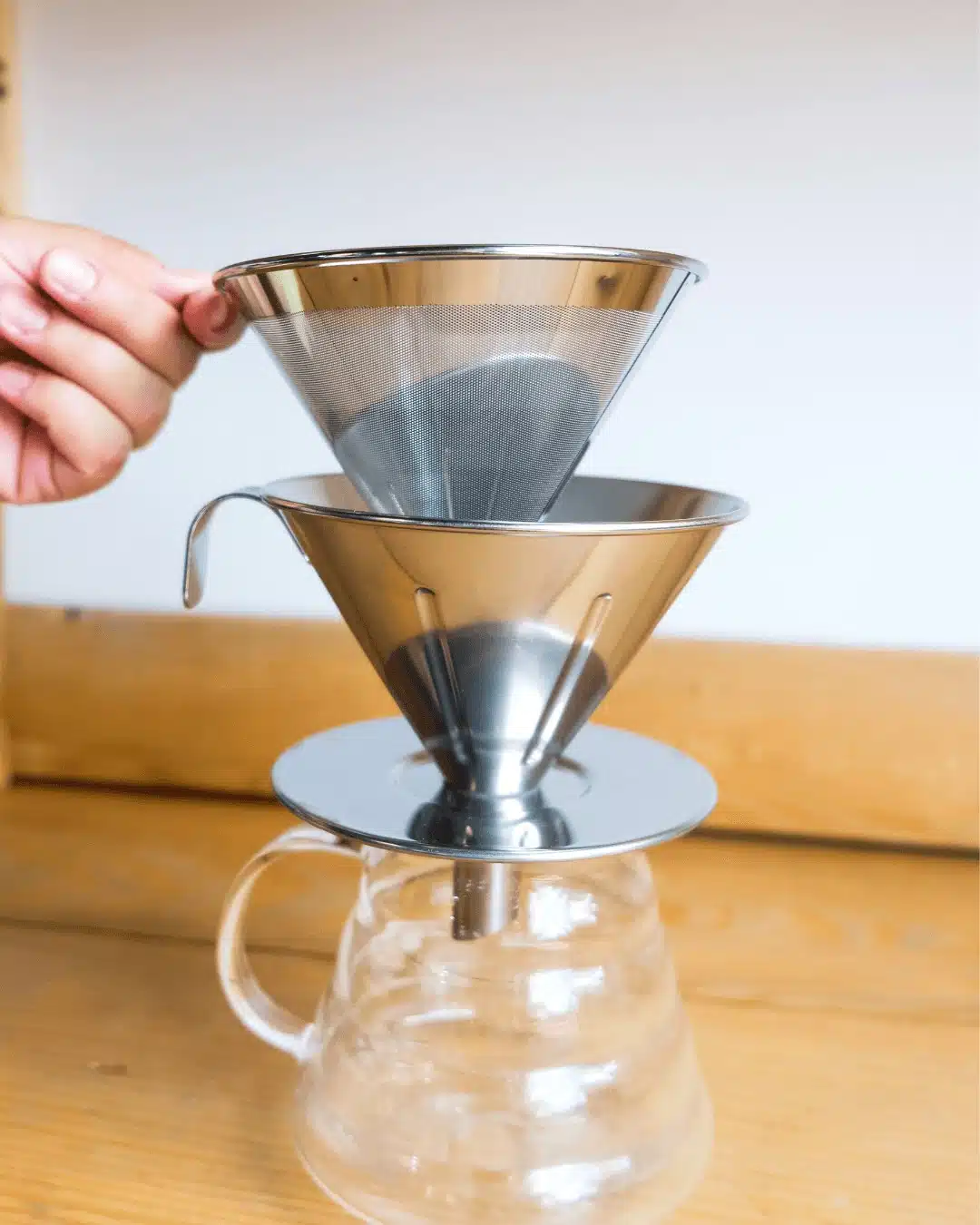
Cleaning and Disposal of Paper Filters
When using paper filters, cleanliness and responsible disposal are important considerations. Unlike reusable coffee filters, paper filters offer convenience but require specific handling post-brewing.
Cleaning Paper Filters
- Single-use convenience: One of the primary benefits of paper filters is that they are designed for single use. This means you don’t need to clean them after brewing.
- Quick removal: Simply discard the used paper filter along with the coffee grounds, minimizing mess and effort.
- Avoiding clogs: Since they are discarded, you reduce the risk of clogging your brewing equipment, ensuring a consistently smooth coffee flow.
Disposal Considerations
- Compostable options: Many paper filters are biodegradable and can be composted, making them an environmentally friendly choice.
- Regular trash: If composting isn’t possible, simply dispose of them in your regular waste. Check local disposal guidelines for specific recommendations.
Environmental Impact
- Reduce waste: Opting for compostable paper filters can significantly lessen your ecological footprint.
- Sustainability: Supporting brands that prioritize sustainable production processes helps promote environmentally responsible practices in the coffee industry.
In summary, paper filters simplify your coffee-making process while allowing for an eco-friendly approach to disposal. Emphasizing cleanliness and waste reduction enhances both your brewing experience and your environmental responsibility.
Alternatives to Paper Filters
While paper filters have their advantages, several alternatives can enhance your filter coffee experience. Below are some popular options:
- Metal Filters:
These reusable filters, often made from stainless steel, allow more oils and fine particles to pass through, resulting in a full-bodied cup of coffee. They are environmentally friendly and cost-effective over time. - Cloth Filters:
Made from cotton or other materials, cloth filters offer a balanced brew. They filter out fine particles while allowing oils to seep through, similar to metal filters. Regular washing is essential to maintain their quality. - Plastic Sieve Filters:
Lightweight and durable, plastic sieve filters are often used in coffee makers. They provide a consistent brew but may not retain the same flavors and oils as other alternatives. - French Press:
While not a filter in the traditional sense, using a French press allows for a more robust flavor profile by steeping coffee grounds directly in water. The metal mesh filter lets oils pass through, creating a distinct taste.
Comparison Table of Filter Options
| Filter Type | Reusable | Flavor Profile | Maintenance |
|---|---|---|---|
| Paper Filters | No | Clean and smooth | Dispose after use |
| Metal Filters | Yes | Full-bodied | Rinse and dry |
| Cloth Filters | Yes | Balanced | Wash regularly |
| Plastic Sieve | Yes | Slightly muted | Clean after use |
| French Press | No | Rich and robust | Clean after use |
Exploring these alternatives to paper filters allows coffee enthusiasts to experiment and find the perfect brewing method for their taste. Each option brings unique flavors and experiences to your daily cup of coffee.
Conclusion: Enhancing Your Coffee Experience
In conclusion, using paper filters when preparing filter coffee significantly enhances your overall coffee experience. They not only allow for a clean and smooth brew but also contribute to the vibrant flavors locked in your coffee grounds. Here are key takeaways to improve your coffee ritual:
- Cleaner Brews: Paper filters effectively trap coffee oils and sediment, resulting in a cleaner cup that highlights the coffee’s intricate flavors.
- Customization: With various types of paper filters available, you can experiment to find the perfect fit for your coffee maker and brewing preferences.
- Reduced Bitterness: The right paper filter can minimize bitterness, offering a more balanced and enjoyable drinking experience.
Ultimately, prioritizing the right tools, such as quality paper filters, allows you to explore and appreciate the wide range of coffee flavors. Embrace the versatility of paper filters as part of your brewing process. By incorporating these simple yet effective tools into your routine, you’ll elevate your filter coffee journey—creating a richer, fresher, and altogether more delightful coffee experience.
So, whether you’re a casual drinker or a passionate coffee enthusiast, don’t underestimate the impact of paper filters in your cup. Enjoy the process and savor the journey to the perfect brew!
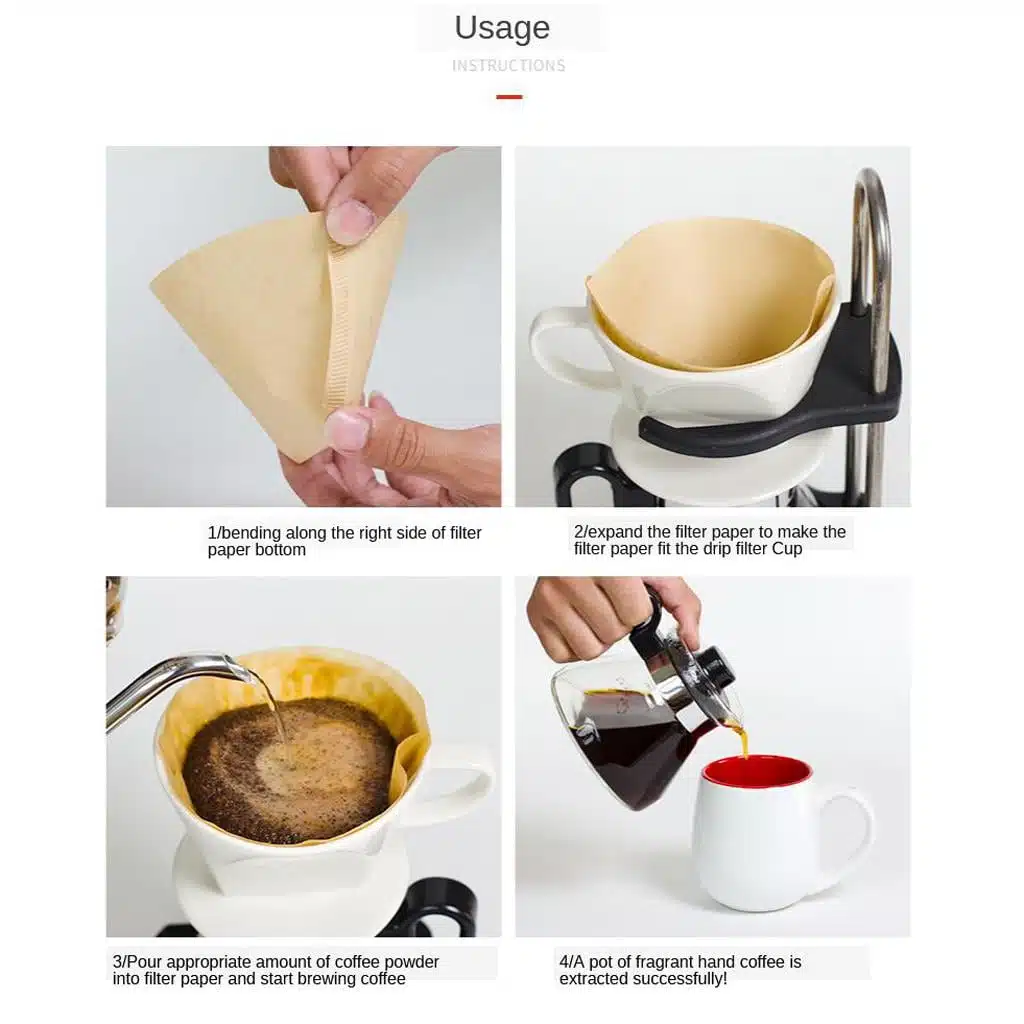
Frequently Asked Questions
What are the advantages of using paper filters for filter coffee?
Using paper filters for filter coffee offers several advantages, including a cleaner cup of coffee, as they effectively trap oils and fine particles, reducing sediment in the final brew. This results in a smoother and more flavorful cup. Paper filters also make for easy cleanup, allowing for quick disposal after brewing. Additionally, they can enhance taste by preventing any unwanted bitterness that might arise from brewing directly with grounds.
Are there different types of paper filters available?
Yes, there are various types of paper filters available for filter coffee, including bleached and unbleached options. Bleached filters are treated with chlorine or oxygen to give them a white color and are often preferred for their aesthetic appeal and cleanliness. Unbleached filters maintain a natural brown color and may impart a slight paper taste initially, but they are more environmentally friendly. Additionally, filters come in different sizes to fit various coffee makers, ensuring compatibility with your brewing device.
How do I choose the right paper filter for my coffee maker?
Choosing the right paper filter for your coffee maker involves considering the size and type of your brewing device. Most coffee makers specify the size of the filter, often labeled as ‘basket’ or ‘cone’, and it’s essential to select the appropriate size for a proper fit. Additionally, consider whether you prefer bleached or unbleached filters based on flavor preference and environmental impact. Checking the manufacturer’s recommendations can also help you make the right decision.
Can I reuse paper filters for brewing coffee?
While it may be tempting to reuse paper filters, it is not generally recommended for optimal flavor and hygiene. Used paper filters can retain oils and coffee grounds, leading to a bitter taste in subsequent brews. Furthermore, using a dirty filter can introduce bacteria into your coffee. However, if you’re in a pinch, lightly rinsing the filter and reusing it for one more brew may be feasible, but freshness is key to achieving the best flavor.
How do I properly store paper filters?
To ensure the longevity and effectiveness of your paper filters, it is best to store them in a cool, dry place away from direct sunlight. Keeping them in their original packaging or in an airtight container can protect them from moisture and contaminants. Avoid storing them near strong odors, as paper filters can absorb smells that may affect the flavor of your coffee. Proper storage will help maintain their quality and ensure a clean brewing experience.

